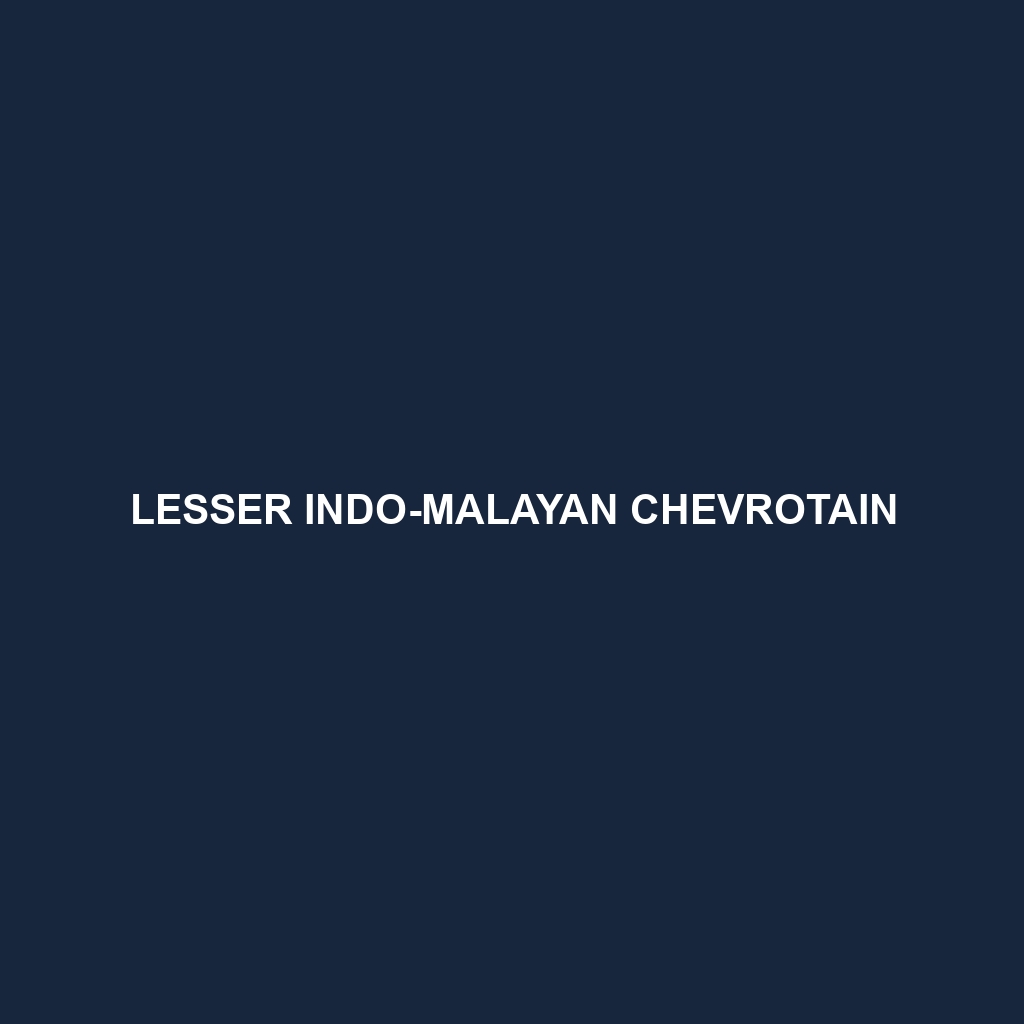Javan Chevrotain (Scientific Name: Tragulus javanicus)
Habitat
The Javan Chevrotain, also known as the mouse deer, is predominantly found in the dense tropical forests of Southeast Asia, particularly on the islands of Java and Sumatra in Indonesia. These creatures thrive in humid and shaded environments, often inhabiting areas with rich undergrowth, which provides both food and cover from predators.
Physical Characteristics
Javan Chevrotians are small, compact mammals, measuring around 50 to 70 cm in length and weighing between 5 to 10 kg. They exhibit a distinctive rusty brown coat with white spots on their flanks, which aids in camouflage among the forest floor. Their slender legs and short, deer-like body shape contribute to their unique appearance, and they possess short antlers which are rarely seen.
Behavior
Generally solitary creatures, Javan Chevrotians are crepuscular, meaning they are most active during dawn and dusk. They are known for their shy nature and remarkable agility, often using the dense foliage to escape from potential threats. Their vocalizations include a series of soft whistles, which they use to communicate with others in their vicinity.
Diet
Javan Chevrotians are herbivorous, primarily feeding on a variety of leaves, fruits, and soft stems. Their diet is largely comprised of fallen fruits and young shoots from shrubs and trees, making them important seed dispersers within their ecosystem. The ability to consume a diverse range of vegetation allows them to adapt to changing food availability.
Reproduction
Breeding for the Javan Chevrotain typically occurs during the rainy season, peaking from April to August. After a gestation period of approximately 6 months, females give birth to a single offspring, which they hide in dense vegetation for protection during its early weeks. Maternal care is extensive, as mothers frequently return to nurse their young until they are capable of foraging independently.
Conservation Status
The Javan Chevrotain is currently classified as vulnerable by the International Union for Conservation of Nature (IUCN). Habitat loss due to deforestation, agricultural expansion, and hunting have significantly impacted their population numbers in the wild, raising concerns for their future survival.
Interesting Facts
One fascinating aspect of the Javan Chevrotain is its ability to go without drinking water for extended periods, as it obtains sufficient moisture from the vegetation it consumes. Additionally, despite being categorized under the Bovidae family, Javan Chevrotians bear a closer resemblance to deer than to traditional bovines.
Role in Ecosystem
As a herbivore, the Javan Chevrotain plays a crucial role in its ecosystem by contributing to the control of plant populations through grazing. Its feeding habits help maintain the balance of the forest’s undergrowth, facilitating various plant growth which in turn supports a wide range of other wildlife. Furthermore, they act as vectors for seed dispersal, promoting biodiversity in their habitats.
